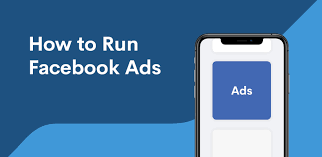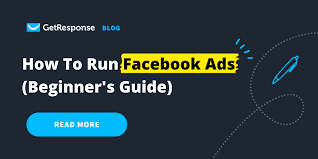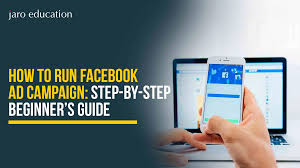In today’s digital-first world, Facebook (now part of Meta) remains one of the most effective advertising platforms for businesses of all sizes. With over 3 billion monthly active users, Facebook and its sister platforms (Instagram, Messenger, WhatsApp) offer advertisers an enormous opportunity to reach potential customers where they spend a significant amount of time.
If you’re a beginner with no experience in digital marketing, don’t worry. Facebook has built its advertising system to be beginner-friendly, while also offering powerful tools for advanced users. This guide will take you through the full process of how to run Facebook ads—from setting up your account to launching your first campaign and optimizing it for better results.
Why Advertise on Facebook?
Before diving into the step-by-step guide, let’s talk about why Facebook Ads are worth your time and budget.
Key Benefits:
-
Massive reach: Facebook and Instagram combined reach billions of users.
-
Precise targeting: Target users based on interests, behavior, location, age, gender, and more.
-
Flexible budget options: Start with as little as $5 per day.
-
Diverse ad formats: From videos to carousels, there’s a format to suit every goal.
-
Integrated with Instagram: Manage ads for both platforms from one place.
Whether you want to grow brand awareness, generate leads, or drive sales, Facebook ads can help.
Step 1: Set Up Meta Business Manager
To advertise on Facebook, you’ll need to use Meta Business Manager (formerly Facebook Business Manager). It’s a free tool that helps you manage your Facebook Page, Instagram profile, ad accounts, and billing info all in one place.

Steps to Set It Up:
-
Click “Create Account” and log in using your personal Facebook profile.
-
Add your business name, email, and details.
-
Link your Facebook Page (or create a new one).
-
Add a payment method under “Payment Settings.”
Once set up, you’ll use Ads Manager inside Business Manager to create and monitor your campaigns.
Step 2: Understand the Facebook Ads Structure
Before creating ads, you should understand how Facebook organizes campaigns. Facebook Ads follow a three-level structure:
-
Campaign: Set your marketing objective (e.g., sales, leads, awareness).
-
Ad Set: Define your audience, budget, placement, and schedule.
-
Ad: Create the actual ad — including visuals, copy, and call-to-action.
This structure keeps your campaigns organized and makes testing and optimization much easier.
Step 3: Choose a Campaign Objective
When you create a campaign, you must choose an objective. Your objective tells Facebook what action you want people to take. There are three main categories of objectives:
1. AwarenessHow
-
Brand Awareness: Show your ad to people more likely to recall it.
-
Reach: Show your ad to the maximum number of people.

2. Consideration
-
Traffic: Drive clicks to your website or landing page.
-
Engagement: Get more likes, comments, or shares.
-
App Installs: Promote downloads of your app.
-
Video Views: Show your video to more people.
-
Lead Generation: Collect contact details through a form.
-
Messages: Start conversations in Messenger or Instagram DM.
3. Conversions
-
Sales (Conversions): Encourage people to take action on your website (buy, register, etc.).
-
Catalog Sales: Show products from your catalog dynamically.
-
Store Traffic: Bring foot traffic to your physical store.
If you’re new, Traffic, Engagement, or Leads are good starting points.
Step 4: Define Your Audience
Facebook’s targeting options are what make it so powerful. In the Ad Set level, you’ll choose your audience using the following options:
Basic Targeting:
-
Location: Country, city, zip code, or radius around a point.
-
Age and Gender
-
Languages
Detailed Targeting:
-
Interests: Travel, fashion, food, fitness, etc.
-
Behaviors: Online shopping, frequent travelers, etc.
-
Demographics: Job titles, education, relationship status.
Advanced Audiences:
-
Custom Audiences: People who’ve already interacted with your website, app, or posts.
-
Lookalike Audiences: New users who are similar to your existing customers.
Tip: Avoid going too broad at first. Start with a clear niche audience and expand later.
Step 5: Set Your Budget and Schedule
Now it’s time to decide how much you want to spend Beginner’s Guide to Advertising on Facebook
Budget Options:
-
Daily Budget: The average you’re willing to spend per day.
-
Lifetime Budget: The total budget over the full campaign duration.
Set a start and end date, or let it run continuously.
Bidding and Optimization:
Facebook automatically bids to get the most results for your goal. You can manually set bids later, but automatic bidding is fine for beginners.
Start small — $5 to $20 per day — and test different ads before increasing your budget.
Step 6: Choose Ad Placement
Facebook gives you the option to let it decide where your ads should appear or you can choose manually.
Automatic Placements (Recommended for beginners):
-
Facebook News Feed
-
Instagram Feed
-
Facebook and Instagram Stories
-
Facebook Marketplace
-
Messenger Inbox
-
Reels
Manual Placements:
Choose only the placements you want (e.g., just Instagram Stories or Facebook Feed).
If you’re new, stick to Automatic Placements and let Facebook’s algorithm optimize based on performance.
Step 7: Create the Ad
Now for the fun part — designing your actual ad. This is where you upload your creative content and write your copy.
Ad Formats:
-
Single Image
-
Video
-
Carousel (multiple images/videos in one ad)
-
Slideshow (looping video made from images)
-
Collection (ideal for mobile shopping)
Elements of a Great Ad;

-
Headline: Clear, compelling, and benefit-focused.
-
Primary Text: A short message that explains your offer or value.
-
Visual: Use high-quality images or videos.
-
Call-to-Action (CTA): “Learn More,” “Shop Now,” “Sign Up,” etc.
-
Link: Direct users to your website, landing page, or Messenger.
Make sure your creative matches your audience and your goal. Always preview how your ad looks on different devices before
Step 8: Review and Publish
Before launching, Facebook will show a preview of your ad and all your settings.
Double-check the following:
-
Campaign objective
-
Audience targeting
-
Budget and schedule
-
Ad content and CTA
Once everything looks good, click Publish.
Your ad will be submitted for review by Facebook (usually takes 30 minutes to a few hours). Once approved, it will begin delivering based on your schedule.
Step 9: Monitor and Analyze Performance
After your ad goes live, head over to Ads Manager to track how it’s performing.
Key Metrics to Monitor

-
Impressions: How many times your ad was shown.
-
Reach: Number of unique people who saw your ad.
-
CTR (Click-Through Rate): % of users who clicked your ad.
-
CPC (Cost Per Click): Average cost for each click.
-
Conversions: Number of people who completed your desired action.
-
ROAS (Return on Ad Spend): Revenue generated vs. money spent.
Ads Manager offers detailed breakdowns by age, gender, device, and placement — so you can see what’s working and what’s not.
Step 10: Test and Optimize
No ad is perfect the first time. Success on Facebook Ads comes from testing, learning, and optimizing.
What to Test:
-
Different images or videos
-
Multiple headlines and descriptions
-
Various CTAs
-
Audience segments
-
Placements
Optimization Tips:
-
Pause underperforming ads
-
Scale winning ad sets by increasing budget
-
Use A/B testing for data-driven improvements
-
Try retargeting people who visited your site but didn’t convert
The more you test, the better your ads will perform over time.
Bonus: Install the Meta Pixel
The Meta Pixel is a small piece of code you install on your website to track user actions (like purchases or sign-ups). It’s essential for:
-
Measuring conversions
-
Creating retargeting audiences
-
Optimizing ad delivery


